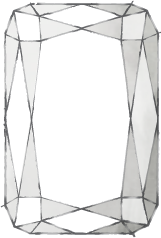DIAMONDS
THE CUTS
-
ROUND
It is the most popular cut, as classic and timeless as diamonds are. The exquisite simplicity of round diamonds is perfect to signal the precious moment when two people start a joint life together. The round cut is considered to provide the best refraction of light, while the position of the sides hides possible blemishes. The round cut gives 57-58 sides in triangle and rhombus shapes. Each and every diamond, it is thoroughly examined by our experienced team before being placed in one of our jewels.
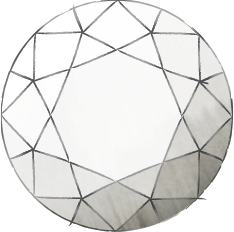
-
CUSHION
Despite its modern looks, the cushion cut has a history of centuries. It is square shaped with rounded corners that form 64 sides. It fits perfectly in rings, earrings and a variety of jewel types. It is not a coincidence, after all, that some of the most legendary diamonds in the world (Hope Diamond, Regent Diamond) are cut in cushion style.
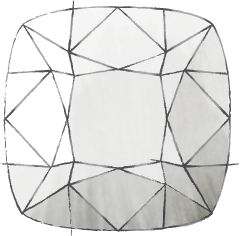
-
OVAL
This is another modern alternative for the round cut, which is said to have appeared in Russia in 1957. The oval cut maintains the brightness of the diamond, in the same way, the round cut does, but it is a more elegant, differentiated approach. Given its oval shape this cut makes the stone look bigger, which makes the diamond –and the jewel in total- look bigger. The bowtie effect, described in the pear cut, has to be mentioned in the certification papers. Hence, before purchasing an oval cut diamond, make sure to see it live, as the shadow is obvious to the naked, untrained eye.
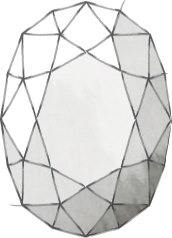
-
PRINCESS
It is a new modern cut, first seen in the 70s, but it is becoming more and more popular as the alternative of the round cut. Keeping the 58 sides, but here in a square shape with sharp corners, the Princess cut highlights the diamond with its unraveling shine that cannot be unnoticed. This is a case of perfect balance between modern and classic, placed amongst the favorite selections of women around the world. On top of this, the diamond used for the princess cut is usually slightly cheaper than the round cut ones, since it uses the 80% of the raw stone, while the round cut keeps only the 50% of it.
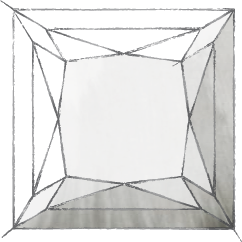
-
EMERALD
The emerald cut is almost a synonym for elegance. One of the oldest cuts, it is first spotted around 1500, while its name was given in the Art Deco period where simplicity and geometrical symmetry were dominant. The rectangle parallel sides highlight the transparency of the diamond, slightly at the cost of its brightness. If this is the cut of your choice, pay extra attention to the clarity and select a diamond above VS2, as the large surface in the center will reveal all blemishes.
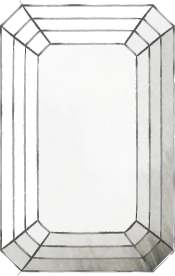
-
MARQUISE
During the 18th century, Louis XV asked for a diamond cut in a way similar to the lips of Marquise de Pompadour. This is the legend behind this elliptical cut with the 58 sides and the pointy edges. Since the marquise diamonds are long and narrow, they also give the impression of being bigger. Exactly as in the case of the oval cut, the long shape makes the fingers look longer. Symmetry is also crucial here as each side must be the mirror of the other one.
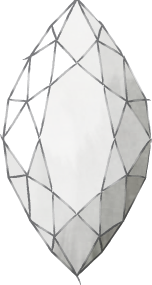
-
PEAR
One of the most intriguing cuts as it has a round base and a pointy edge. This combination makes the shape unique while showing off the brightness of the diamond. Pear cut diamonds make the fingers look longer and the stone look bigger. Although significant for all diamonds, the cut is particularly determinant for pear-shaped ones as it defines the shape of the stone. In the core of the stone, there is a shadow creating the so-called bowtie effect, which more or less intense. Naturally, the ideal is that the shadow will not exist at all. Our advice in case you want to select this cut to make sure that the pointy edge is somehow secured.
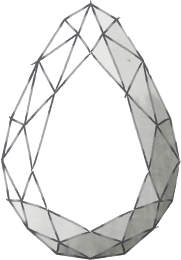
-
ASHOKA®
Apart from the common cuts, there are also some others, which scarcity makes them more valuable. One of the most iconic amongst them is William Goldberg’s ASHOKA® Cut, that can be found in Greece exclusively at Venetia Vildiridis stores. Rectangle shaped with rounded corners, it is suitable for a small minority of diamonds, as fewer than one percent measure up to the exacting standards. The outcome is impressive as it makes the stone look larger and longer, while its 62 facets initiate a unique interplay with the light. The ASHOKA® cut is one of the cuts that satisfies even the most demanding clients.
